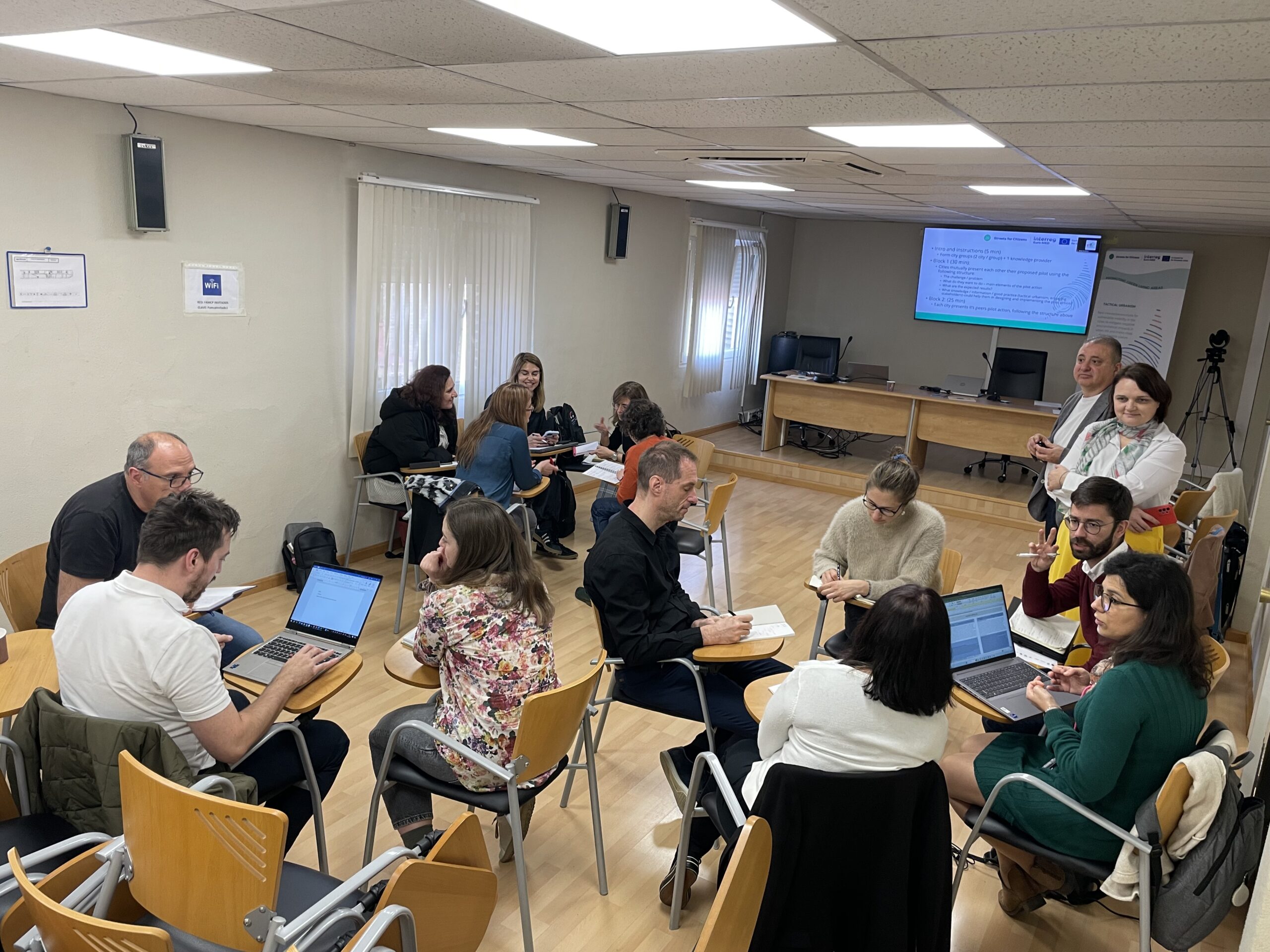
What we do
Implementing tactical urbanism solutions offers a multitude of benefits across social, environmental, and economic dimensions. However, navigating the complexities involved in installing these solutions with diverse stakeholder groups can pose challenges. The project aims to streamline and simplify this process, reducing the burden on local authorities while fostering greater engagement among communities and businesses.
Our approach is built upon three main pillars:
- The first pillar involves laying the groundwork by examining the underlying challenges and their root causes. This includes establishing a knowledge base by drawing upon existing solutions and experiences, particularly those rooted in the concept of tactical urbanism. We adapt and refine specific transferable strategies in this phase.
- The second pillar focuses on empowering partners to implement tactical urbanism solutions in practical terms. We define tactical urbanism as an innovative concept and adopt its principles to address environmental management challenges. This phase entails engaging local and transnational stakeholders, enhancing partners’ capacity, developing roadmaps, and designing final solutions.
- The third pillar revolves around testing the tools through small-scale pilot actions. This involves preparing for future local actions and crafting policy proposals. Tactical urbanism, encompassing approaches like pop-up urbanism and guerrilla urbanism, describes low-cost interventions aimed at enhancing local neighborhoods and experimenting with novel solutions to specific challenges. Leveraging these cost-effective solutions allows local actors to test innovative approaches before committing substantial resources.
Central to all pillars is the active participation of citizens, who play a pivotal role in testing and demonstrating how public spaces can be repurposed for more human-centric activities beyond just transportation and parking.
Show and tell

The tools and guides currently available are not customized to suit the specific contexts and requirements of small- and medium-sized towns in the EURO MED AREA and particular IPA countries. Therefore, our approach follows a “learn, show, and tell” framework. Initially, we “learn” by leveraging existing methodologies and tools to craft a capacity-building strategy, educating partners on the background, theory, and benefits of tactical urbanism. Subsequently, partners design action plans for pilot initiatives, implement and evaluate these pilots to “show” their effectiveness. Drawing from the insights gained from these pilots, the partnership then develops and disseminates tools and policy proposals tailored to the target group to “tell” their success stories. In summary, our approach revolves around “learn, show, and tell.”

